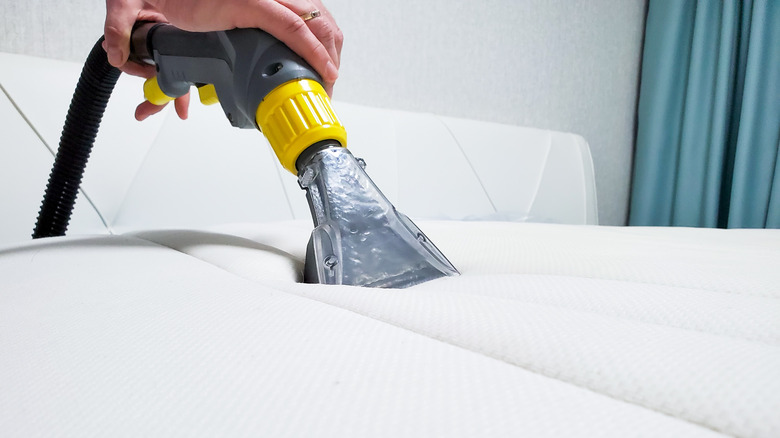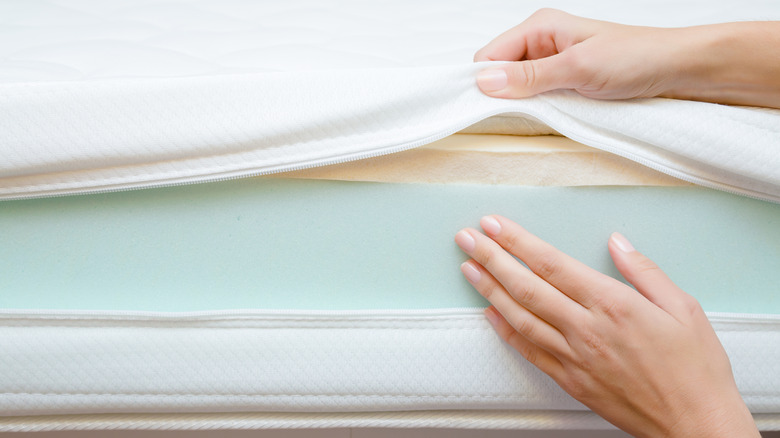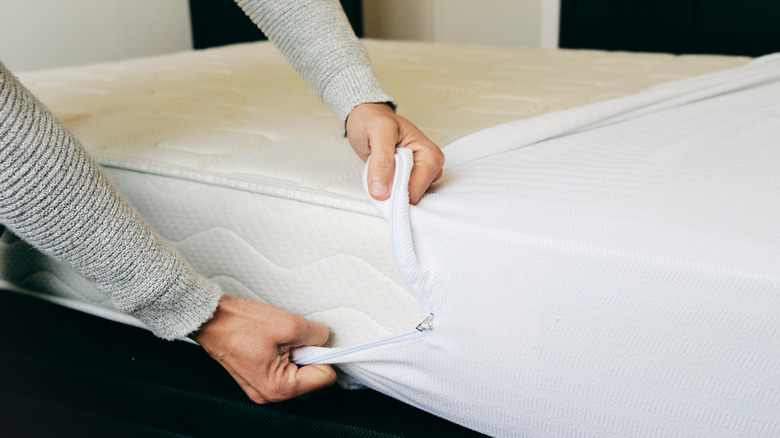Why You Should Think Twice Before Using A Carpet Cleaner On Your Mattress
Your mattress is where you spend a significant portion of your life, and ensuring its cleanliness is crucial for a healthy sleep environment. A clean and well-maintained mattress can contribute to better sleep quality, eliminating allergens, dust mites, and other irritants that may interfere with your rest. Additionally, regular cleaning and maintenance can extend the lifespan of your mattress, ensuring that it remains comfortable and supportive for longer.
However, while it might seem like a great idea to clean your bed using a carpet cleaner, there are better options. While carpet cleaners are an excellent tool for removing stains and dirt from carpets, they could be more harmful than beneficial to your bed, as their brushes and cleaning chemicals can often be too harsh for the everyday mattress. It's important to choose safe and effective cleaning techniques that are appropriate for both the materials and unique characteristics of your mattress.
Risks of using carpet cleaners on mattresses
Carpet cleaners often use cleaning solutions containing detergents and chemicals to effectively remove stains and dirt from carpet fibers. However, mattresses are made of materials such as foam, springs, latex, cotton, and synthetic fibers, and the moisture and chemicals in carpet cleaning solutions can lead to mold or mildew growth, discoloration, and even a breakdown of materials.
The suction power of a carpet cleaner, intended for pulling dirt and debris from deep within carpets, can pull apart the delicate layers of foam and disrupt the arrangement of springs, compromising the overall integrity of the mattress. Similarly, brushes designed to agitate and scrub carpet fibers can be too abrasive for the materials used in beds, and they may cause fabric thinning or tears in the mattress's cover.
But if you follow precautions, it is possible to safely clean a spring mattress. "Make sure you use a cleaning solution designed for fabrics and upholstery, as opposed to carpets, and test it on a small area first to ensure it doesn't damage or discolor your mattress," cleaning expert Ahmad Jamal of CleanersAdvisor told Homes and Gardens, adding that using the lowest-pressure setting on your carpet cleaner is also a good idea.
Safe and effective alternatives
Preventive measures and regular maintenance are vital to keeping your mattress clean. A mattress protector you can remove and wash can prevent spills, stains, and dust mites from penetrating the bed. Regular vacuuming using the upholstery attachment can remove dust, debris, and allergens from the surface and crevices of the mattress. For deeper cleaning and odor removal, sprinkle baking soda generously over the bed, leave it for several hours to absorb unwanted odors, and then thoroughly vacuum it.
To spot-clean your mattress, blot with a mixture of mild detergent and water, and avoid saturating the mattress to avoid mold and mildew growth. After blotting, allow the area to air dry completely before placing any bedding back on the mattress. If you want to achieve a deep clean free from chemicals, a steam cleaner can do a great job. The high-temperature steam loosens dirt and grime while it sanitizes the bed. It evaporates quickly, minimizing moisture absorption into the mattress. Of course, you should always refer to the manufacturer's instructions for cleaning any type of mattress.


